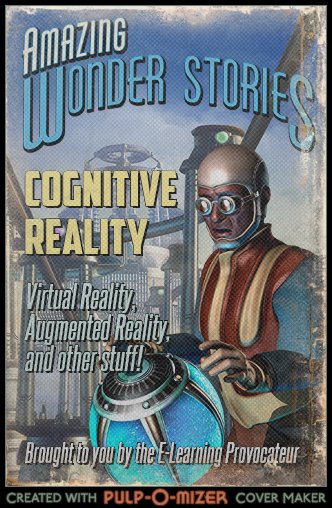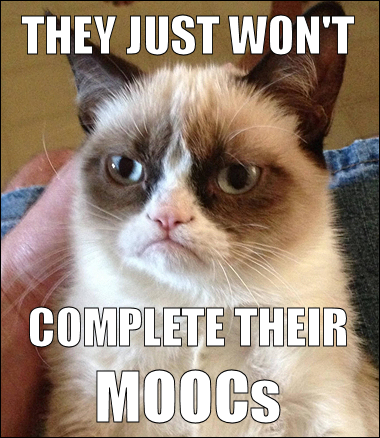Here’s a common scenario: I “quickly” look up something on Wikipedia, and hours later I have 47 tabs open as I delve into tangential aspects of the topic.
That’s the beauty of hypertext. A link takes you somewhere else, which contains other links that take you somewhere else yet again. The Internet is thus the perfect vehicle for explaining the concept of rhizomatic learning.
Rhizomatic learning is something that I have been superficially aware of for a while. I had read a few blog posts by Dave Cormier and I follow the intrepid Soozie Bea, but unfortunately I missed Dave’s #rhizo14 mooc earlier in the year.
Since I’ve been blogging about the semantics of education lately, I thought it high time to dig a little deeper.

It seems to me that rhizomatic learning is the pedagogical antithesis of direct instruction. Direct instruction has pre-defined learning outcomes with pre-defined content to match. The content is typically delivered in a highly structured format.
In contrast, rhizomatic learning has no pre-defined learning outcomes nor pre-defined content. The learner almost haphazardly follows his or her own line of inquiry from one aspect of the subject matter to the next, then the next, and so forth according to whatever piques his or her interest. Thus it can not be predicted ahead of time.
Given my scientific background, I was already familiar with the rhizome. So is everyone else, incidentally, perhaps without realising it. A rhizome is the creeping rootstalk of a plant that explores the soil around it, sending out new roots and shoots as it goes along. A common example is bamboo, whose rhizome enables it to spread like wildfire.
In A Thousand Plateaus: Capitalism and Schizophrenia, Gilles Deleuze and Félix Guattari adopt the rhizome as a metaphor for the spread of culture throughout society. That’s a massive over-simplification, of course, and quite possibly wrong. The Outsider represents the extent of my French philosophy bookshelf!
Anyway, the point I’m bumbling towards is that Dave Cormier has picked up this philosophical metaphor and applied it to the wonderful world of learning. He explains in Trying to write Rhizomatic Learning in 300 words:
“Rhizomatic Learning developed as an approach for me as a response to my experiences working with online communities. Along with some colleagues we started meeting regularly online for live interactive webcasts starting in 2005 at Edtechtalk. We learned by working together, sharing our experiences and understanding. The outcomes of those discussions were more about participating and belonging than about specific items of content – the content was already everywhere around us on the web. Our challenge was in learning how to choose, how to deal with the uncertainty of abundance and choice presented by the Internet. In translating this experience to the classroom, I try to see the open web and the connections we create between people and ideas as the curriculum for learning. In a sense, participating in the community is the curriculum.”
I note that this explanation from 2012 is somewhat different from his paper in 2008, which of course reflects the evolution of the idea. In Rhizomatic Education: Community as Curriculum, Dave similarly mentioned the abundance of content on the Internet, and also the shrinking half-life of knowledge. He contrasted the context of traditional education – in which experts are the custodians of a canon of accepted thought, which is presumed to remain relatively stable – with today – in which knowledge changes so quickly as to make the traditional notion of education flawed.
Dave posited educational technology is a prime example. Indeed when I studied this discipline at university, much of the learning theory (for instance) enjoyed a broad canon of knowledge to which students such as myself could refer. It was even documented in textbooks. Other aspects of the subject (for instance, the rapid advances in technology, and the pedagogical shifts towards social and informal learning) could not be compared against any such canon. The development of this knowledge was so rapid that we students relied as much on each other’s recent experiences and on sharing our personal learning journeys than we did on anything the professor could supply.
“In the rhizomatic model of learning, curriculum is not driven by predefined inputs from experts; it is constructed and negotiated in real time by the contributions of those engaged in the learning process. This community acts as the curriculum, spontaneously shaping, constructing, and reconstructing itself and the subject of its learning in the same way that the rhizome responds to changing environmental conditions.”
From 2008 to 2012, I see a shift in Dave’s language from Rhizomatic Education to Rhizomatic Learning. This I think is a better fit for the metaphor, as while it may be argued that the members of the community are “teaching” one another, the driving force behind the learning process is the active learner who uses the community as a resource and makes his or her own decisions along the way.
I also note the change from “the community is the curriculum” to “participating in the community is the curriculum”. Another semantic shift that I think is closer to the mark, but perhaps still not quite there. I suggest that the content created by the members of community is the curriculum. In other words, the curriculum is the output that emerges from participating in the community. So “participating in the community produces the curriculum”.
As a philosophy for learning, then, rhizomatic learning is not so different from constructivism, connectivism, and more broadly, andragogy. The distinguishing feature is the botanical imagery.
However this is where my understanding clouds over…
Is it the abundance of content “out there” that is rhizomatic?
Or is it the construction of new knowledge that is rhizomatic?
Or is it the learning journey that is undertaken by the individual learner?
Perhaps such pedantic questions are inconsequential, but the scientist in me demands clarification. So I propose the following:
- The knowledge that is constructed by the community is the rhizome.
- The process of constructing the knowledge by the members of the community is rhizomatic education.
- The process of exploring, discovering and consuming the knowledge by the individual learner is rhizomatic learning.
If we return to my Wikipedia scenario, we can use it as a microcosm of the World Wide Web and the universe more broadly:
- The ever-expanding Wikipedia is the rhizome.
- The Wikipedians are conducting rhizomatic education.
- I, the Average Joe who looks it up and loses myself in it for hours on end, is experiencing rhizomatic learning.
In the age of Web 2.0, Average Joe may also be a Wikipedian. Hence we can all be rhizomatic educators and rhizomatic learners.

I also detect a certain level of defensiveness from Dave in his early paper. He prefaces his work with a quote from Henrik Ibsen’s An enemy of the People which rejoices in the evolution of “truth” in the face of conventional resistance [my interpretation], while later on he addresses the responses of the “purveyors of traditional educational knowledge” – primarily in the realms of academic publishing and intellectual property.
I think Dave was right to be defensive. Despite the pervasive learnification of education that would theoretically promote rhizomatic learning as its poster boy, anything new that threatens the status quo is typically met with outrage from those who stand to lose out.
A case in point is moocs. Dave refers to Alec Couros’s graduate course in educational technology, which was a precursor to his enormously popular #ETMOOC. While a cMOOC such as this one may be the epitome of the rhizomatic philosophy, I contend that it also applies to the xMOOC.
You see, while the xMOOC is [partly] delivered instructivistly, those darn participants still learn rhizomatically! And so the traditionalists delight in the low completion rates of moocs, while the rest of us appreciate that learning (as opposed to education) simply doesn’t work that way – especially in the digital age.
Don’t get me wrong: I am no anti-educationalist. Regular readers of my blog will not find it surprising when I point out that sometimes the rhizomatic model is not appropriate. For example, when the learner is a novice in a particular field, they don’t know what they don’t know. As I was alluding to via my tweet to Urbie in lrnchat, sometimes there is a central and stable canon of knowledge and the appointed expert is best placed to teach it to you.
I also realise that while an abundance of knowledge is indeed freely available on the Internet, not all of it is. It may be hidden in walled gardens, or not on the web at all. Soozie makes the point that information sources go beyond what the web and other technologies can channel. “Information that is filtered, classified or cleansed, consolidated or verified may also come from formal, non-formal or informal connections including teachers, friends, relatives, professional colleagues and recognized experts in the field.” But I take her point that all this is enhanced by technology.
Finally, the prominence of rhizomatic learning will inevitably increase as knowledge continues to digitise and our lens on learning continues to informalise. In this context, I think the role of the instructor needs much more consideration. While Dave maintains that the role is to provide an introduction to an existing learning community in which the student may participate, there is obviously more that we L&D pro’s must do to fulfil our purpose into the future.
On that note I’ll rest my rhizomatic deliberation on rhizomatic learning. If you want to find out more about this philosophy, I suggest you look it up on Wikipedia.









